An introduction to growing marijuana
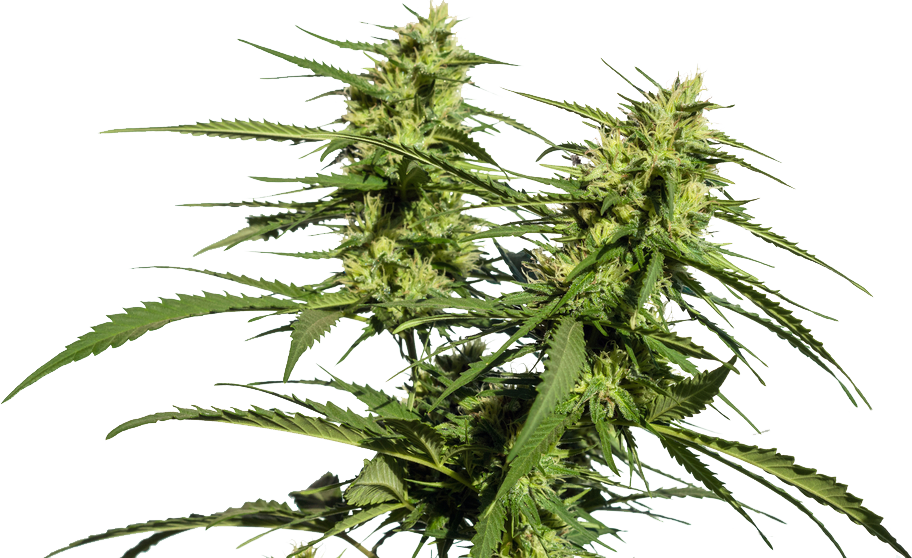
Starting a grow will help you build a strong relationship with the cannabis plant, and truly understand what this beautiful plant is all about. You need to know what cannabis plants need in order for them to grow into healthy mature plants that deliver good amounts of beautiful and smelly buds. To provide these needs, most growers need to do some preparations first.
Cannabis is a plant, and just like any plant, it requires 4 critical elements to thrive:
Light - Water - Nutrients - Fresh Air
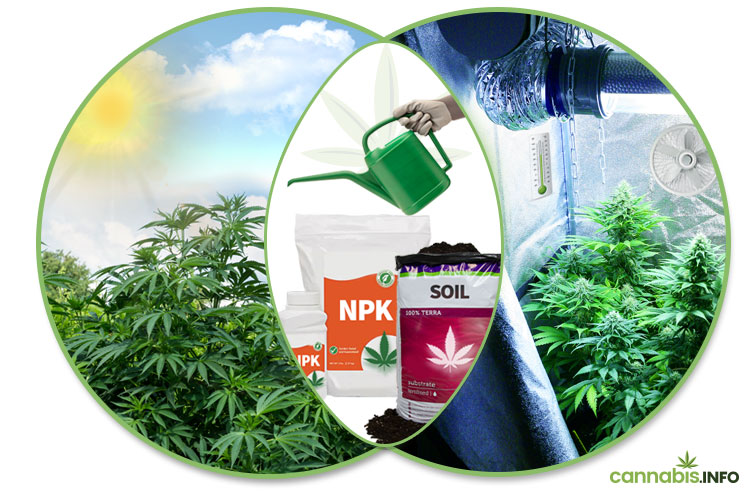
If you can accommodate each of these elements, the chances of growing strong, healthy cannabis plants with a nice reward at the end are incredibly high. Let's go through each of these elements:
LIGHT

Light is essential for photosynthesis, the primary function undertaken by plants. Sunlight (or artificial light) provides the fuel for plants to grow, absorb nutrients, and most importantly, develop dank buds. The light spectrum and duration of exposure will need to be adjusted for both the vegetative and flowering stages. Cannabis growers often say 'more light = more bud'.
Read more about
WATER

Water is the lifeblood of nearly every organism on planet earth. To keep your plants in shape you need to know how, when and how much water to give them. The amount and frequency to give water depends on the genetics you use, your grow method, climate, and of course the size of your plant.
Read more about
NUTRIENTS
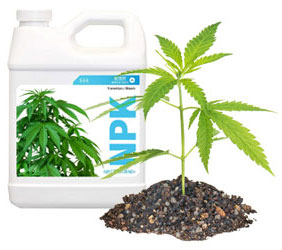
In addition to light and water, cannabis plants need a variety of nutrients. If you go to a grow shop and look for 'All-In-One' nutrient bottles you will probably immediately notice the next 3-letter combination: N-P-K. This represents the ratio of nitrogen (N), phosphorus (P), and potassium (K), the 3 elements of nutrition cannabis plants use in large quantities. Nutrients can be either organic or synthetic.
Read more about
FRESH AIR
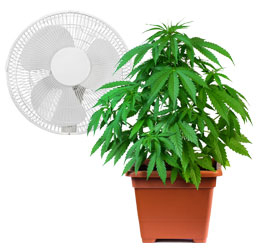
For outdoor growers fresh air is an easy thing to fix. However, when growing indoors, it's vital to take care of proper air circulation. Plants use carbon dioxide from the air to make food and sugars. The oxygen from the air is used for respiration (breaking down food to produce energy).
Read more about
In addition to the 4 elements mentioned above, you will need to keep an eye on a few other aspects. Originally, cannabis grows in tropical and sub-tropical areas. This implies that they are accustomed to certain living conditions such as a warm temperature, 40-60% humidity and specific pH levels of the grow medium.
Make your choices and get everything ready
Before you actually start growing, you have to make some choices first. The 2 most important questions that you have to ask yourself first are:
- Are you going to grow indoors or outdoors?
- Which strain do you want to grow?
INDOORS OR OUTDOORS?
For the real cannabis enthusiast, there is nothing more beautiful than watching a healthy cannabis plant that is able to enjoy the outdoor sun during a nice and warm summer. The outdoor grower who is lucky enough to live in a suitable place does not need much in itself. The plants can grow in the open ground or in a large pot with soil. It is wise to have some nutrients at hand and the possibility to give extra water when needed, but in principle nature will do the rest of the work.
Unfortunately, not everyone is blessed with a living environment that makes a cannabis plant happy. In addition, it is not possible for many to grow outside due to legal reasons and cannabis plants should therefore be grown discretely. Luckily, marijuana is a plant that can easily be grown indoors. But there is more work to be done for the indoor grower.
A grow room will have to be provided in which the right conditions can be created where cannabis plants can excel. This should be a closed room with the right temperature, humidity, fresh air and an advanced light system (HID lights or LED lights). If you want to get rid of the smell (and most indoor growers do) you will need to attach a carbon filter to the exhaust system.
WHICH STRAIN?
There are literally thousands of different marijuana strains available. All these strains have their own characteristics. It is therefore important to delve into this beforehand. Picking the right strain is an important proces for the home grower. This prevents disappointments at a later time.
Do you want the classic indica body buzz or the euphoric feelings of a pure sativa? Or a mix of these effects maybe? What kind of smell and taste do you prefer? High in THC or high in CBD? Do you have a lot of time or do you want a strain that you can harvest very quickly?
In our Strain Database you will find more than 1500 different cannabis strains in alphabetical order. Each strain has a description, pictures, and all strain characteristics clearly listed in a row. Thanks to the reviews you also get a clear picture of the opinion of others.
To facilitate your search, there is the Hall of Fame with all the classics and other outperforming strains that have provided the amazing variety of genetics we have at our disposal today. In the Top 10 Lists category you will find the 10 best strains, each time with a different characteristic This wide variety of genetics is due to the many breeders and seed banks worldwide. More than 100 of them are listed in our Strain Database.
If you are looking for a strain with one or more specific properties, quickly check out our StrainFinder. With the StrainFinder you can quickly find the perfect strain for you.
3. The life cycle of the cannabis plant
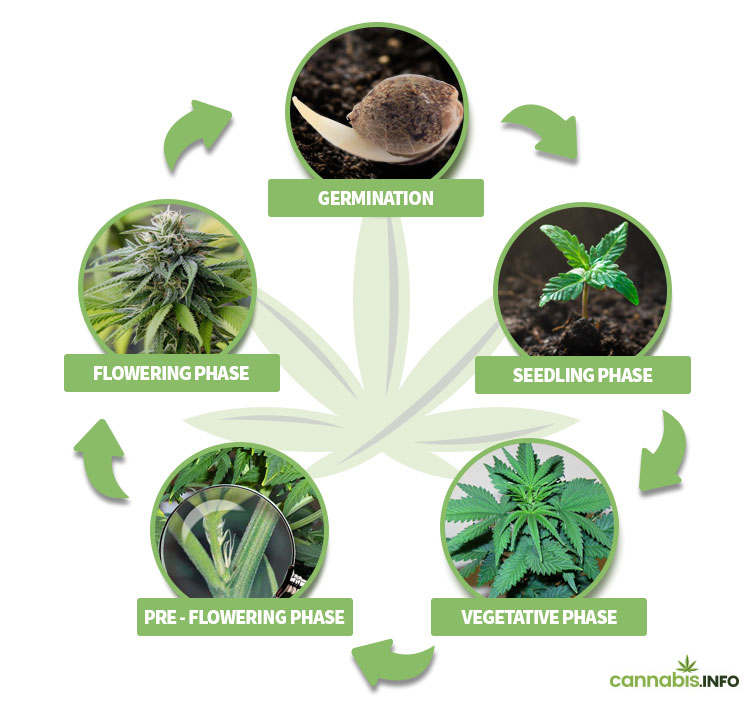
SEED GERMINATION
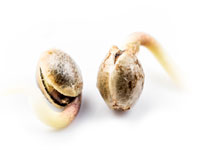
If you are a first-time grower, start with seeds from a reputable seed bank. Experienced cannabis growers can use either clones or seeds; this is because clones are prone to a higher risk of disease and infection, so growing experience will help manage issues that arise. Another way to make the process of growing easier is to opt for autoflowering seeds. This will remove the complication of managing light cycles. However, both autoflowering and photoperiod strains still need love, care, and all the elements listed in step one to return a respectable yield.
Read more about
SEEDLING PHASE
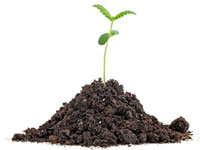
Delicate and frail, seedlings require the most attention and care to get your cannabis off to a good start. There are a few possible ways to germinate. Either drop the seed into a cup of water away from light until the taproot appears, or place it between wet paper towels and store in a plastic container with high humidity. Both methods will require a consistent temperature of 20–25°C/68–77°F. Once germinated, seedlings can be planted 3–5mm below the surface of your substrate. Finally, don’t flood seedlings with water, see step one for guidance on watering routines.
Read more about
VEGETATIVE PHASE
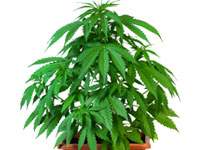
Continue appropriate watering routines, and you will see the first signs of a fully fledged cannabis plant. As the first leaves start to develop, that is your cue to make a few critical adjustments. Introduce a light cycle providing 18 hours of uninterrupted light followed by 6 hours of darkness. Add a fertiliser like worm meal or bat guano; both of these provide high doses of nitrogen, a crucial nutrient for developing plants. Ambient temperature should remain at 20–25°C/68–77°F. Relative humidity should be between 50–70% during the vegetative stage.
Read more about
PRE-FLOWERING PHASE
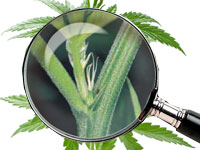
Pre-flowering usually occurs during the 4th week of the vegetative stage. Assuming you choose feminized seeds, a magnifying glass will help you identify the pear-shaped nodes that appear on the 4th node of the stem. Once spotted, the light cycle needs its second adjustment. Usually, 12 hours of uninterrupted light, 12 hours of complete darkness. The change in lighting prompts cannabis plants to begin flowering. Nutrient content should also be altered to include more potassium and phosphorus, with less nitrogen. The modified lighting schedule can be ignored if you choose an autoflowering strain.
FLOWERING PHASE
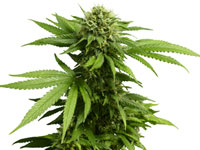
The altered light cycle will cause cannabis plants to go into overdrive. You have effectively tricked them into thinking winter is coming, and therefore, they need to flower. The flowering phase sees the most rapid change; plants will stretch, almost doubling in height, and flowers will cluster into thick nugs. Refer to the seed producer’s strain details for an indication of how long flowering should last.
Read more about
4. Harvest

WHEN TO CUT DOWN YOUR PLANTS
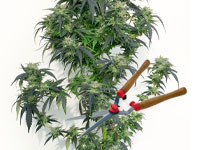
Careful observation of trichomes using a magnifying glass will tell you when the time is right to harvest. Once half the trichs are cloudy and half are amber, your plant is ready for the chop. An easier—though less exact—method is to examine the pistils. When around 60 to 70% have darkened and curled inward, it’s probably harvest time. Flushing a week or two before harvest is a practice highly recommended by experienced growers.
Read more about
TRIMMING MARIJUANA BUDS
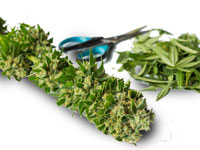
DRYING MARIJUANA BUDS
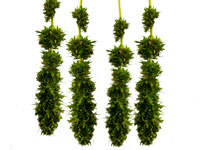
Drying allows the flavor and potency to develop after the buds have been removed from the cannabis plant and trimmed. While wearing gloves, remove excess fan leaves. Why the gloves? The buds will be thick with resin, and constant handling can get your hands very sticky. A favorite technique is to hang the buds (still on the branches) upside down from coat hangers when drying. Leave them in an area that has a relative humidity of 50%. You’ll know the buds are ready when they feel dry to the touch.
Read more about
CURING MARIJUANA BUDS
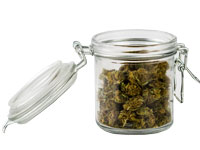
After a good drying process the buds should be given a decent period of curing. This curing is the difference between OK marijuana and great marijuana. The dried buds should be transferred to a mason jar so that you can restore some of the moisture that was lost. A sign of optimal humidity (roughly 60–65%) is when cannabis buds feel dry, but not crumbly to touch. A 1l mason jar should hold about 30g of dried buds. The aim is to periodically remove the lid and allow air to enter to achieve optimal humidity. Open all jars at least once per day for the first 1–2 weeks of curing. The entire process can take from four weeks all the way up to six months. The longer buds are left to cure, the more exceptional the flavor and aroma when smoked.
Read more about
.jpg)
.jpg)

.jpg)
















